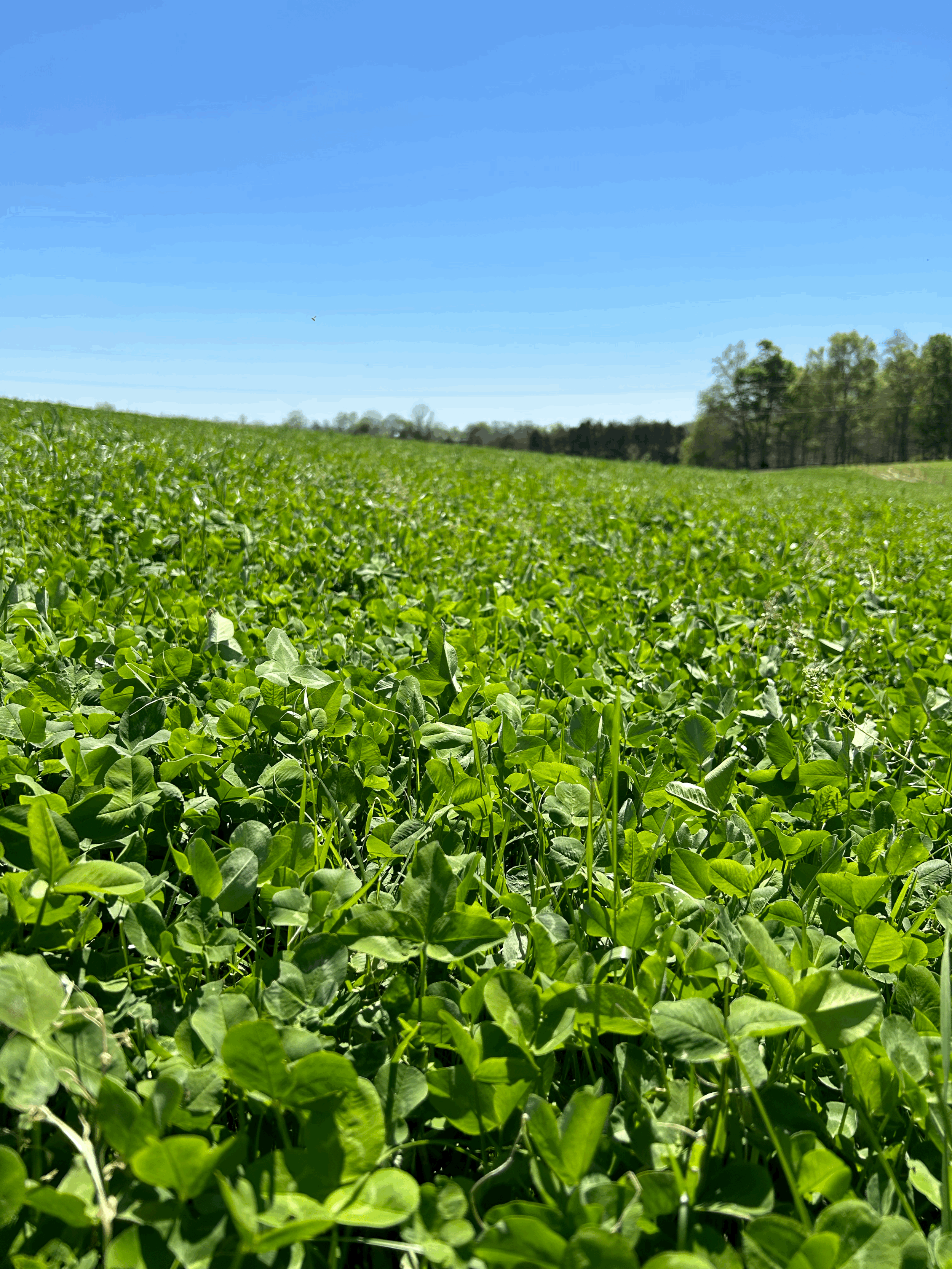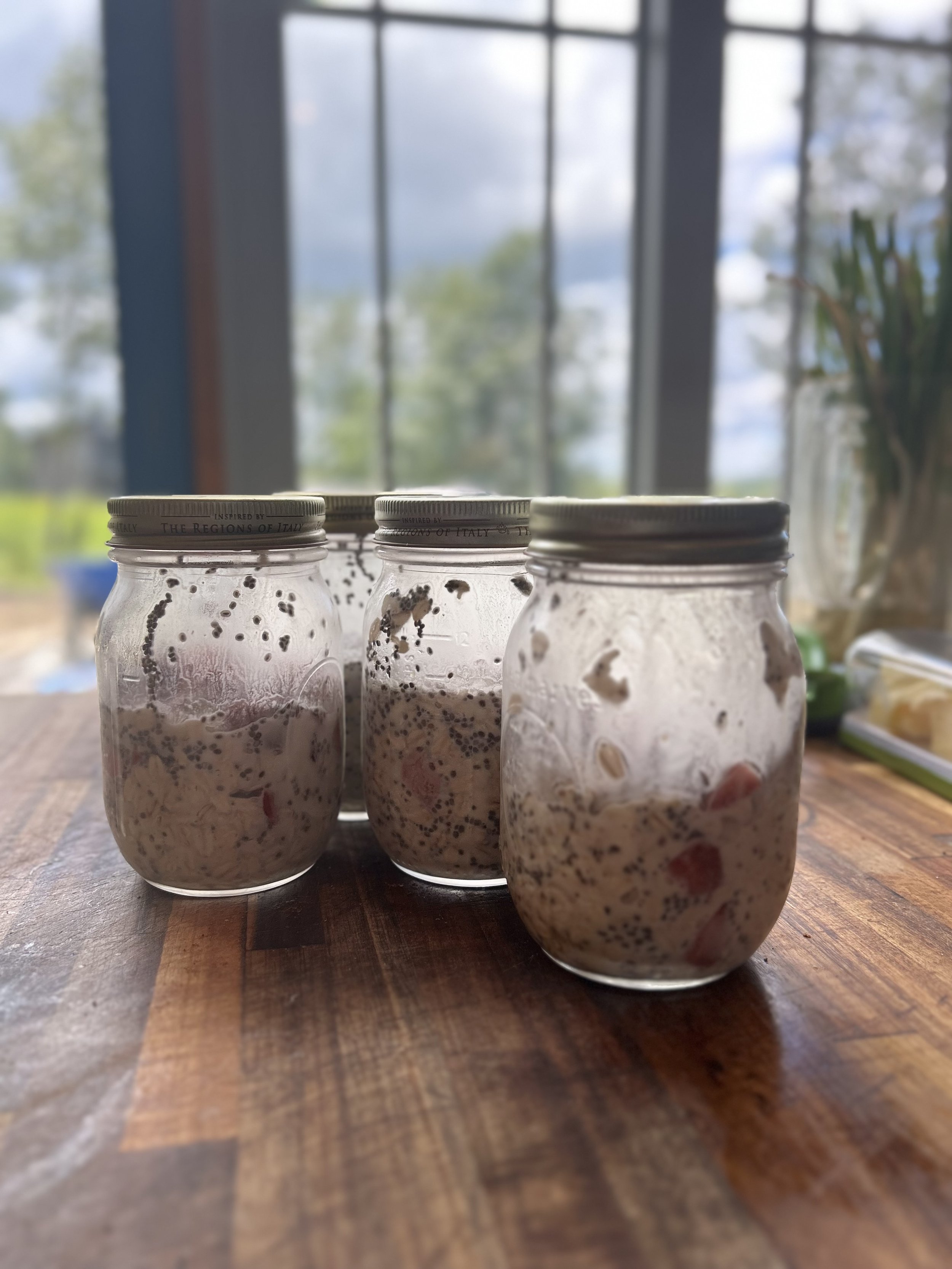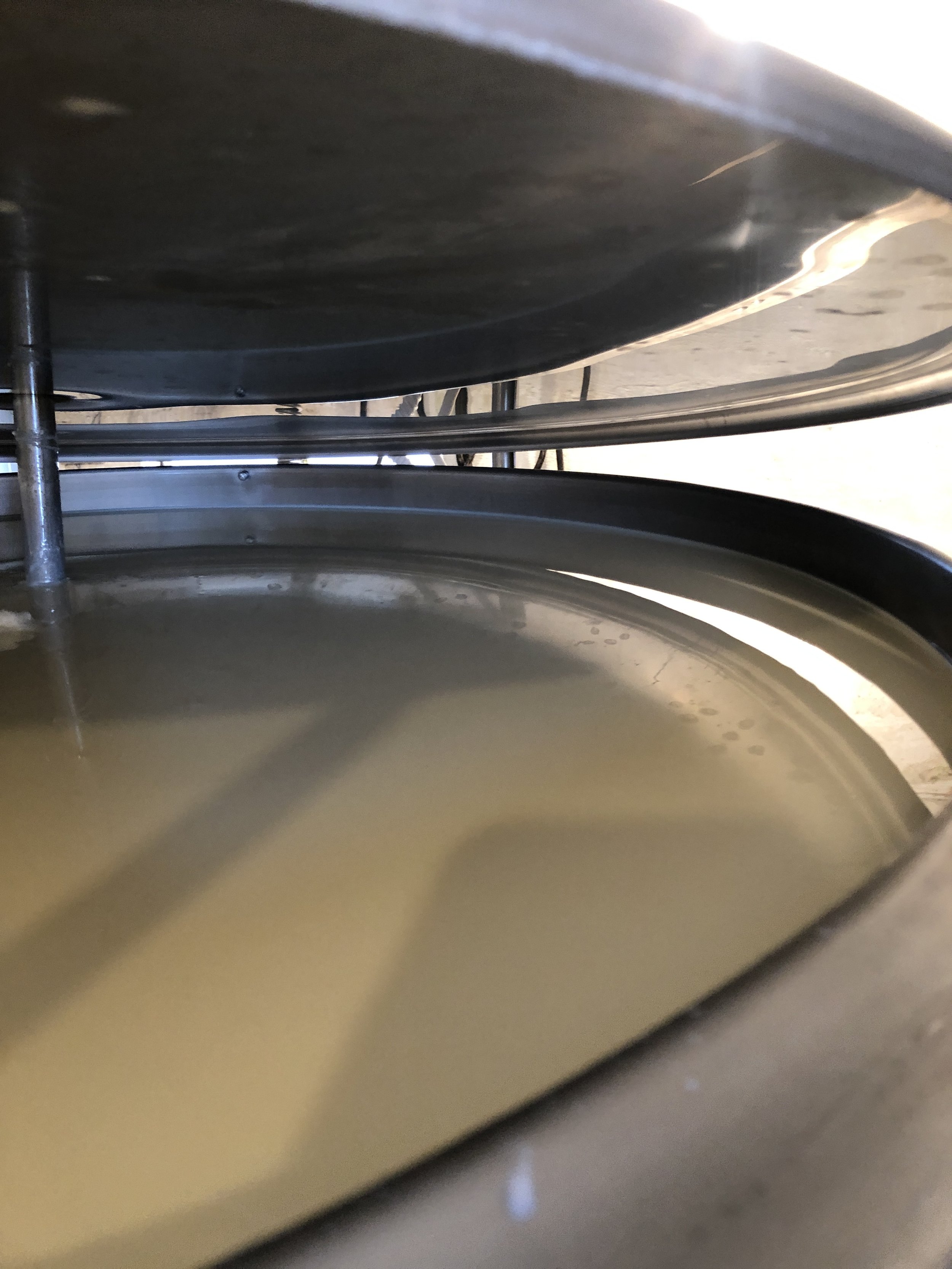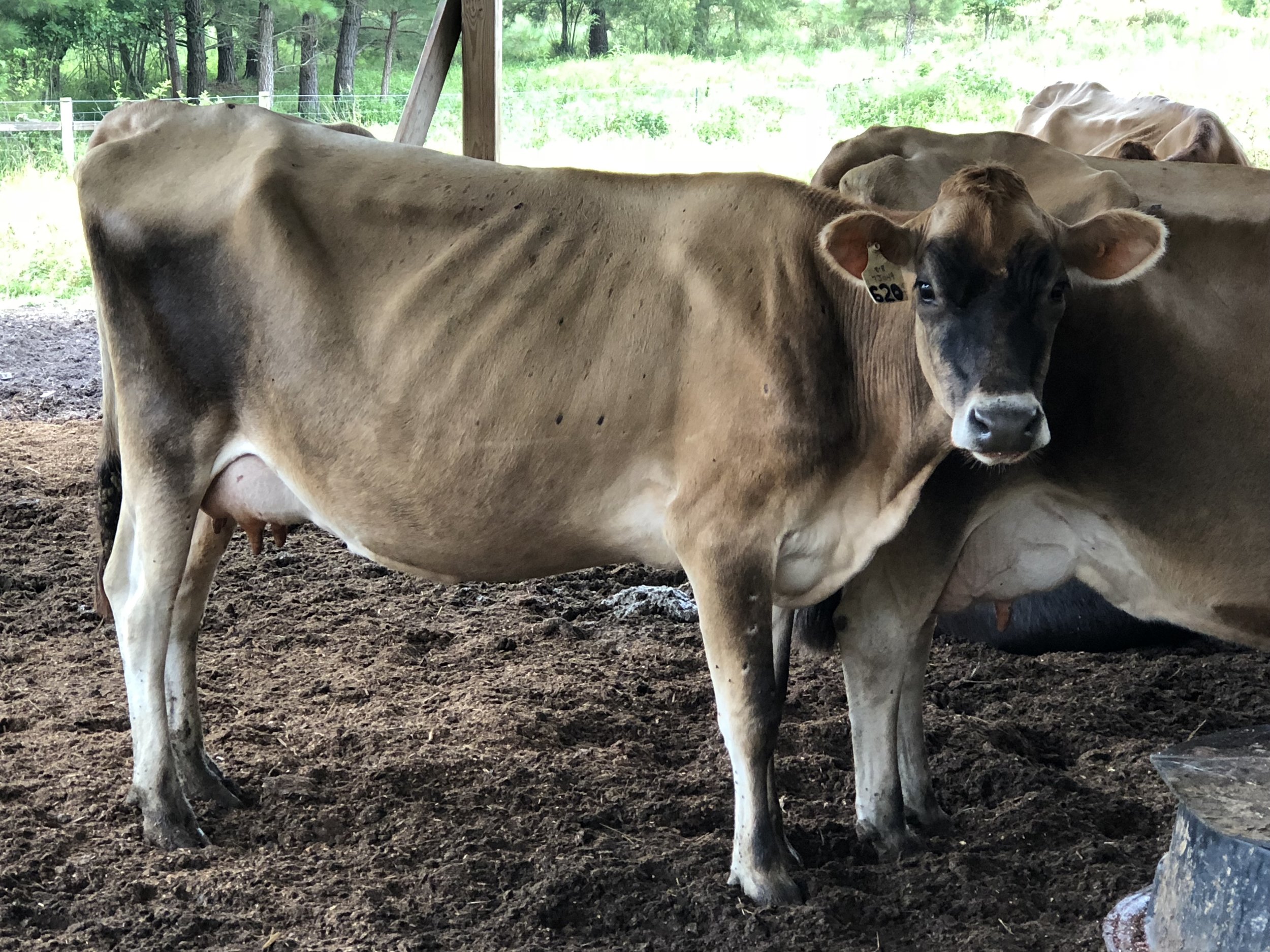Running a business, particularly a farm, is a challenging and unique endeavor. As we’ve grown, one of the things I’ve learned is CHANGE HAPPENS. And to be ready!!
The past 3-5 years, we have seen more growth and more change than I could have ever expected! The growth has been AMAZING and we are so grateful for our customers! For the support you show by continuing to be herd share members and for all of the interactions we get to have with you at market and via calls, texts and emails every single week.
The role changes have been substantial. As our family and close friends know, the past two years have seen the most change and some of the most challenging seasons since we started the farm. The biggest change is Ben stepping away from the farm to run his own TWO businesses: Signal Builders and Signal Electric. He is now a certified electrical contractor and has been building his business for the past 2 years along side his brother-in-law, Calob Merryfield. You can visit their website here.
What else has changed? I (JoAnna) have stepped from working full time IN the business to full time MANAGING the business. And what a challenging change that has been! In March of 2023, our full-time milk hand that had been milking for us for 4 years (and had been milking cows from age 10yrs old onward) retired at the age of 66. After 56 years of milking cows, it was time to slow down for him.
This left a rather large (and unexpectedly sudden as we were given no notice of the change) gap in the farm. Our family does not live on-farm as we rent our current farm from our dear friend and “Farm Dad”, David. David stepped into a caretaker role for us around the end of 2018 (I was 7 months pregnant with our third daughter, Tali) Since Ben and I didn’t live on farm, we had to quickly try to fill the position of milking hand. Our former milk hand’s tasks included milking the cows and bottling all the milk on-farm.
I recall calling David that morning and working with him to sort out the tasks and try to figure out how to hold everything together. David agreed to milk the cows daily until I was able to find a replacement milk hand. I agreed to take on bottling daily at the farm until I could figure out what else to do and how to find help. This was a huge undertaking. It takes a little over an hour one way to drive to the farm from our house. I was making the drive daily to bottle because the bulk tank would be full daily and we needed the milk ready to be delivered! It took me around 3-5hrs per day to bottle plus the 2hrs of driving there and back. I then had to process all the milk for deliveries (label, sort, ice, etc) and then we had to actually DELIVER the milk. Meanwhile, I had to continue my normal tasks of administrator: answering emails, phone calls, texts, etc. HOW did I accomplish all that?! Honestly, I wonder that myself somedays…The only answer that fits is simply the grace of God. He gave me supernatural stamina to accomplish all the tasks. A lot of late nights and early mornings. Thankfully, Ben was able to help me between construction jobs sometimes.
So we carried on that way for a couple of months until I was able to find 2 new team members to help! I found a milk hand for the farm and another farm hand to help me with bottling, deliveries, etc. The other BIG change was we went from bottling by hand (manually opening and closing the milk valve on the bulk tank) to a semi-automated bottling machine/table. After those two very difficult months, Ben and I agreed we needed to move the bottling off-farm and to our home. We had done milk transport before briefly when we first moved the cows to David’s farm back in 2018. 2023 was an expensive year on the farm but again, the Lord sustained us and provided huge growth in the farm and consistent work for Ben in construction.
Ben had to build a bottling “facility” . That makes it sound so big…It’s a large room/shop/barn/garage which houses the walk in cooler, bottling equipment, 2 bulk tanks and 2 commercial ice machines. I suppose facility really isn’t too far off…Ben is incredibly gifted with construction. He can plan and execute a plan for a building SO fast! As we like to say “Make a solid plan and violently execute until complete.” That’s “The Bleasdale Way”. He had the frame of the building complete within 3-4wks.
The next adjustment for me was figuring out help…This was an extremely difficult concept for me to tackle. I’m stubbornly independent (to a fault…I’ll admit) and relinquishing control of “my baby” (Aka: the farm) to ANYONE was SO INCREDIBLY HARD FOR ME. Learning to communicate with team members when something needed to be changed or addressed, learning how to TRAIN people to help me so I did not have to follow up behind them to get the tasks completed, and ultimately, learning to trust that others would accomplish the tasks I have always done completely by myself (or with Ben) to the high standards that I hold, albeit perhaps differently.
Y’all…This was a monumental step for me. I think we had a little trial and error. It took time to find people to put on my team that were like-minded. That believe in the mission of our farm and are committed to working with and for our family, farm and business. But each of our team members we now have are just that: committed, consistent and HARD workers! They’ve learned so quickly and I literally could NOT do this without them.
This has been one of the most challenging things I’ve done. I had to learn to MANAGE. To use others as my hands to accomplish tasks. I now understand WHY the name farm hand exists: Because they are your literal hands. I had to learn to clearly communicate to my team WHAT I needed and HOW I needed it done. That was hard. As a woman and a talker/chatter, you’d think communication would come easily to me. But it doesn’t. This isn’t just talking. This is clearly explaining the task, being able to answer questions if there is confusion, teaching, training, demonstrating and regularly checking in and communicating with each team member to ensure each has the tools they need to accomplish the tasks they are given.
That’s a big thing: My job is to “provide each team member with the supplies, tools and skills they need to accomplish the tasks they are assigned”. Dang. What does that even mean? 2 years of experience has taught me HOW to do that. Some days are busier than others for me. Some days require more hands-on to accomplish tasks. But in general, I do a lot less of the bottling, labeling and daily tasks. I try to lead my team with a servant’s heart. I am always striving to think about it from their perspective. I do not want to be a “boss” that is hard, frustrating, annoying, doesn’t understand, etc. I want to enable my team members to feel they are trusted. To know they are independent and they can accomplish the tasks before them. If you provide people the opportunity to be trusted, they either rise to the task with pride, or continue on in a mediocre manner. We’ve had our share of things go wrong where a team member has done something wrong. In those situations, I try to focus on how it feels from their perspective. I try to always extend grace first because that’s what I would want someone to do for me.
So the bumpy road of the last several years have led us to here. Today, I have 7 team members that support me at farm. I continue to handle all the administrative end of things. If you call, text or email the farm, that’s me! Having my team behind me enables me to be available to you, the customers. I believe so deeply in what we do. Raw milk is such a nourishing staple. It’s one of the easiest, healthy changes you can make and makes one of the biggest impacts overall.
So while things look different now, please know our commitment and standards have not changed. We are 100% committed to producing the healthiest, most delicious tasting product possible. As we grow bigger, we still strive to operate with the mindset of a small farm. We are still YOUR farmers. I will happily answer any questions you have about our farm. We've simply added some additional members to our farm family.
~JoAnna Bleasdale











